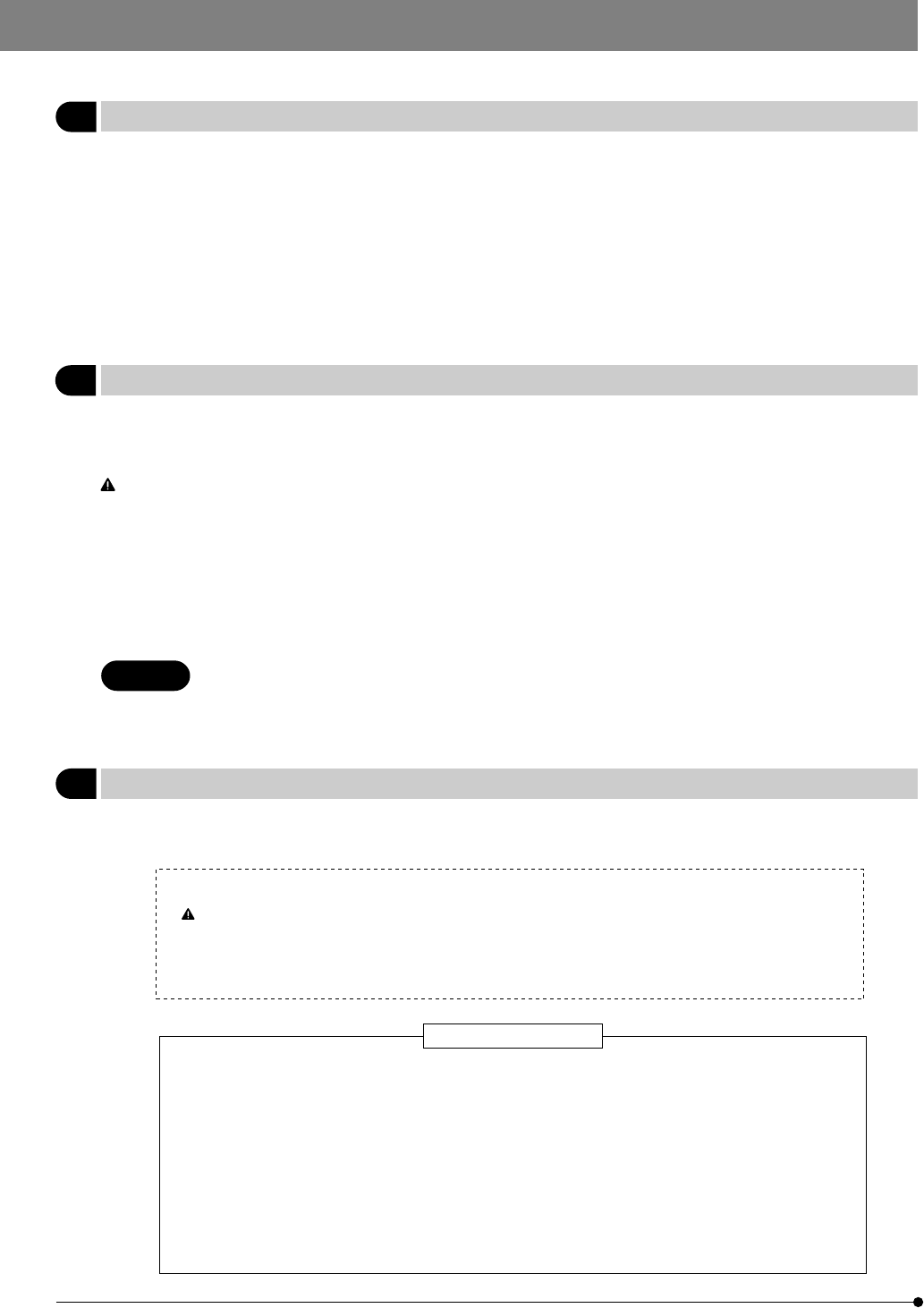
2
1 Getting Ready
1. The camera system uses precision components. Handle it with care and avoid subjecting it to a sudden or severe impact.
2. The image displayed on the liquid crystal display may be affected when it is used near equipment generating strong
electromagnetic waves. This is not a malfunction and will not affect the actual image being recorded. To avoid interference
during operation, keep the system far from any source of electromagnetic waves.
3. When mounting the camera unit on a tripod, attach it by using the DP-TRAD tripod adapter which is separately available.
4. Do not use the camera system in areas where it may be subject to direct sunlight, high temperature and humidity, dust
or vibrations. (For the operating environment conditions, see chapter “10. SPECIFICATIONS” on page 38.)
5. Do not push the LCD monitor screen with a strong force. Otherwise, blur may remain on the screen, disturbing correct
reproduction of pictures or causing the LCD monitor screen to crack.
2 Maintenance and Storage
1. Be careful not to leave dirt or fingerprints on the lenses and other glass components. If a lens is dirty, wipe it gently with
a piece of gauze. To remove fingerprints or oil smudges, wipe the lens with gauze slightly moistened with a mixture of
ether (70%) and alcohol (30%).
Since solvents such as ether and alcohol are highly flammable, they must be handled carefully. Be sure to keep
these chemicals away from open flames or potential sources of electrical sparks –– for example, electrical
equipment that is being switched on or off. Also remember to always use these chemicals only in a well-
ventilated room.
2. Parts other than the glass components should be cleaned by wiping with a clean cloth. Do not use organic solvents to
remove major stains. Use a soft cloth slightly moistened with a neutral detergent solution.
3. To avoid any degradation in performance, do not attempt to disassembly or modify any part of the system.
4. When not using the camera system, keep it covered with the dust cover provided with the microscope.
CAUTION
The control box incorporates a lithium battery used for data backup. This lithium battery has a
service life of about 10 years.
Because the control box incorporates a lithium battery, be sure to check local regulations for proper
disposal procedures when disposing of it.
3 Caution
If the camera system is used in a manner not specified by this manual, the safety of the user may be imperiled. In addition,
the camera system may also be damaged. Always use the equipment as outlined in this instruction manual.
The following symbols are used to set off text in this instruction manual.
: Indicates that failure to follow the instructions in the warning could result in bodily harm to the
user and/or damage to equipment (including objects in the vicinity of the equipment).
# : Indicates that failure to follow the instructions could result in damage to equipment.
} : Indicates commentary (for ease of operation and maintenance).
Data Storage Caution
Recorded picture data may be lost in any of the following cases. Please note that Olympus assures
no liability for loss of recorded data.
· Improper handling of the SmartMedia (SSFDC) by the user or a third party.
· Unauthorized servicing by the user or a third party.
· If the SSFDC is subjected to static or other electrical noise.
· If the card cover is opened or the power cord is unplugged during SSFDC data recording or
erasure (including formatting).
· General equipment failure.


















